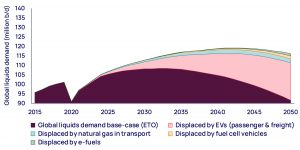by Wood MacKenzie executives Fraser McKay, Head of Upstream Analysis; Ian Thom, Research Director, Upstream; and Ann-Louise Hittle, Vice President, Oil Markets
The oil and gas sector is in an upcycle, as demand rebounds strongly from the Covid-19 pandemic. The roll-out of a low-carbon energy system is going to take time. Oil will continue to drive the global economy and define energy security for many years to come. After three years of recovery, upstream asset development spending is just under $500 billion a year, up by a third from a 2020 low, but barely half the $914 billion 2014 peak (in 2020 terms). The apparent shortfall has fed a widespread belief that the industry is underinvesting and that a supply crunch is inevitable, be it sooner or later.
Wood Mackenzie never subscribed to this. Our long-held opinion was that spending and supply would recover to meet demand. Some previous advocates of the underinvestment thesis are now beginning to align with our view.
We calculate that investment around today’s levels can deliver the supply needed to meet demand through to its peak and beyond. There are three main reasons: the development of giant low-cost oil resources, relentless capital discipline and a transformational improvement in investment efficiency.
Delivering the necessary supply at a reasonable cost will underpin the global economy and boost energy security. But it will also leave the world well short of the goals of the Paris Agreement to limit global warming to less than 1.5 °C. For more in this vein, read the remainder of their article at Woodmac’s website at https://www.woodmac.com/horizons/is-there-enough-upstream-investment/











